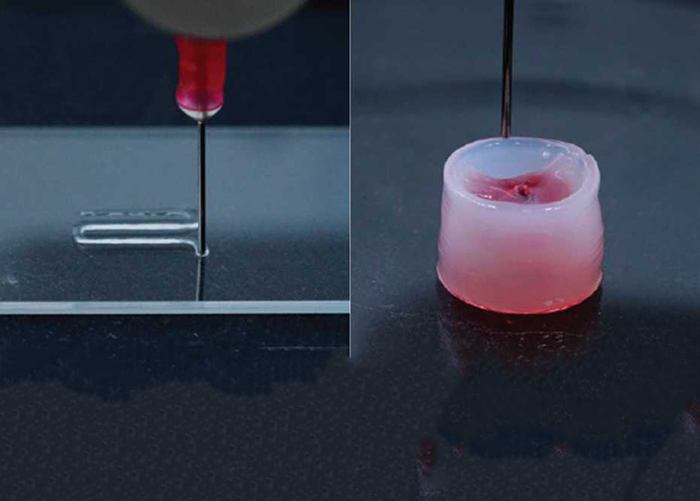3D printing is already used in medicine in many applications, but there’s still a great deal that custom-built implants could offer to patients. Bioinks, the materials from which bespoke implants can printed, may be the most important focus of research aimed at expanding the use of additive manufacturing, another term for 3D printing, in medicine.
Typically, bio-compatible inks have to be developed for a specific application, but researchers at ETH Zurich in Switzerland report on a new ink that can itself be custom adapted to different kinds of devices, whether they’re heart valves, ligaments, or eye implants.
Their new gel, made using cellulose fibers and biodegradable polymeric nanoparticles, starts as a solid but turns to liquid when squeezed through a 3D printer nozzle. When it exits, it turns back to a solid. The cellulose fibers within the material link themselves to the nanoparticles when it’s at rest and no pressure is applied. When squeezed, these bonds break, but then they reform when the pressure is released.
The material can be integrated with all kinds of additional polymers, including collagen, fibrinogen, and hyaluronic acid, to give the printed devices desired physical and mechanical properties, including strength and flexibility, which is particularly important for medical applications. Moreover, different implants can be integrated with functional compounds that promote tissue growth, exert therapeutic effects, and perform novel tasks within the body.














